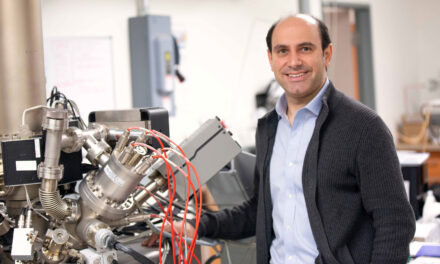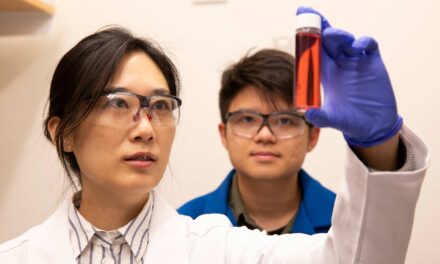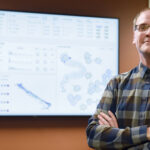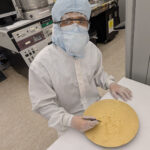
New ASU institute and engineering research centers pursuing extensive range of nanotechnology advances
March 15, 2007
Ira A. Fulton School of Engineering faculty members will direct three nanotechnology research centers recently established by the Arizona Board of Regents. The centers will operate with the oversight of the also newly established Arizona Institute for Nano-Electronics (AINE) at Arizona State University.AINE, jointly administered by the school of engineering and the College of Liberal Arts & Sciences, is directed by Stephen Goodnick, ASU associate vice president of research. It is charged with conducting long-range interdisciplinary research in nanoscale materials, devices, circuits and computer architecture with the aim of achieving revolutionary advances in electronics.
AINE is developing a network of research centers at ASU in key nanotechnology areas that will impact future technology involving such areas as ultra-low power/ultra-high speed electronics and hybrid biomolecular electronics that are merging the biological and electronics worlds. The institute will also provide a direct bridge between the electronics industry and the ASU Biodesign Institute to advance the nano-fusion of electronics, physics, chemistry and biology.
The Institute will be the umbrella group for the Center for Applied Nanoionics (CANi), the Center for Biomolecular Integrated Circuits (CBIC) and the Center for Nanophotonics (CNP).
CANi is directed by Michael Kozicki, a professor in the Department of Electrical Engineering. CBIC is directed by Trevor Thornton, who also is director of ASU’s Center for Solid State Electronics in the Fulton School of Engineering. CNP is directed by Yong-Hang Zhang, a professor in the Department of Electrical Engineering.
The goal of CANi is to keep ASU in the top tier of nanoionics research groups. Its focus will be on developing collaborations between researchers at ASU, industry organizations and at other academic institutions to undertake work across a broad spectrum of research from synthesis and materials characterization to device and system design and analysis.
CBIC will focus on the integration of chemical and biological systems — connecting molecules and biological entities to electronic circuits in ways that promise to revolutionize bio-electronics. The goal is to make advances in circuit technologies with new chemical and biological functionality by using widely adopted microelectronics and micro-electro-mechanical systems (called MEMS) fabrication techniques.
The work will allow the development of new biomolecular integrated circuits that combine the data processing and communication power of advanced semiconductor technologies with the biochemical complexity that nature has evolved over billions of years. These biomolecular integrated circuits technologies will lead to advanced sensor networks with low false-alarm rates, medical implants that interface seamlessly with human and animal cells, and new medical instruments that enable real-time monitoring of human health.
CNP’s mission focuses on the applied research to bridge the discoveries of fundamental physics with practical applications. The research interests include the theoretical and experimental study of semiconductor nanostructures, optoelectronic and photonic devices and their applications in sensing and medical areas.
CNP will collaborate with other ASU, domestic and international research groups and institutions in related areas, ranging from fundamental physics to system integration of these nano-devices for refrigeration and direct power generation, optical communications, on-chip interconnects, sensing and other medical and biological related applications.
The center offers opportunities for graduate and undergraduate students to do thesis research, senior design projects and other research and educational activities. The center will work with industries to promote the commercialization of technologies developed in its laboratories.



































